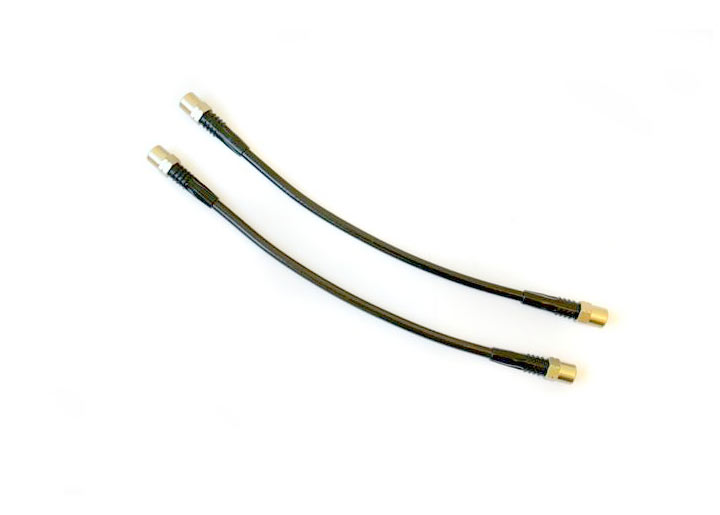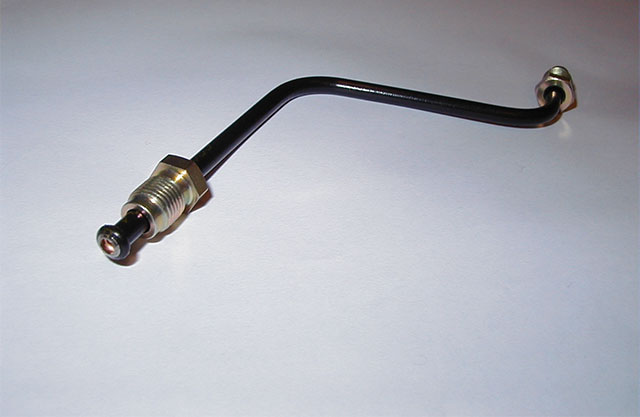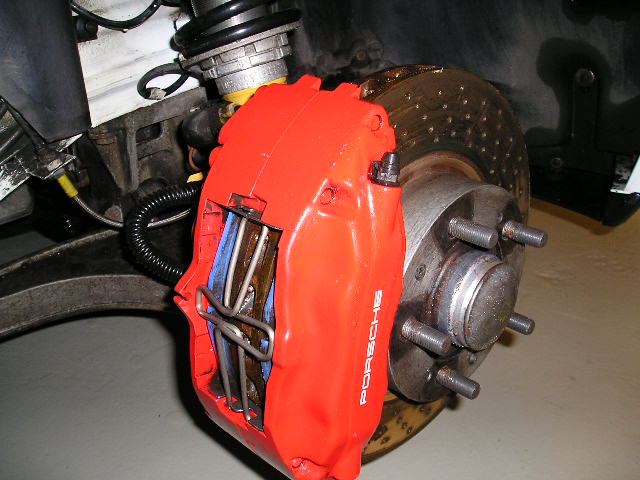Welcome to RennTech.org Community, Guest
There are many great features available to you once you register at RennTech.org
You are free to view posts here, but you must log in to reply to existing posts, or to start your own new topic. Like most online communities, there are costs involved to maintain a site like this - so we encourage our members to donate. All donations go to the costs operating and maintaining this site. We prefer that guests take part in our community and we offer a lot in return to those willing to join our corner of the Porsche world. This site is 99 percent member supported (less than 1 percent comes from advertising) - so please consider an annual donation to keep this site running.
Here are some of the features available - once you register at RennTech.org
- View Classified Ads
- DIY Tutorials
- Porsche TSB Listings (limited)
- VIN Decoder
- Special Offers
-
OBD II P-Codes - Paint Codes
- Registry
- Videos System
- View Reviews
- and get rid of this welcome message
It takes just a few minutes to register, and it's FREE
Contributing Members also get these additional benefits:
(you become a Contributing Member by donating money to the operation of this site)
- No ads - advertisements are removed
- Access the Contributors Only Forum
- Contributing Members Only Downloads
- Send attachments with PMs
- All image/file storage limits are substantially increased for all Contributing Members
- Option Codes Lookup
- VIN Option Lookups (limited)
-
Posts
8,587 -
Joined
-
Last visited
-
Days Won
190
Content Type
Profiles
Events
Forums
External Paint Colors
Downloads
Tutorials
Links Directory
Collections
Store
Posts posted by JFP in PA
-
-
-
We have done a lot of 986 and 996 cars using the Porsche kits, the kit was a cheap and a quick permanent fix for an otherwise annoying problem.
-
Be very careful introducing compressed air into the cooling system, it is very easy to considerably exceed it design operating pressures (less than 20 PSIG) and cause a leak in something expensive and difficult to get at............
-
As this comes up from time to time, here is an article with the entire wiring color codes (http://www.pelicanparts.com/techarticles/Boxster_Tech/88-ELEC-Radio_Install/88-ELEC-Radio_Install.htm ) as well as the connector color and pin codes. The wire that keeps power to the radio to retain the presets is red/black (thick) and is in the black connector.
-
Definitely not replaceable. While only some of the 2005’s had the non-serviceable IMS bearing, all 2006-2008 cars or crate motors did. Sorry.
-
Probably the biggest risk issue is that many of the 05's carried the oversized "final solution" IMS bearing, which means that an upgrade to the LN style bearing requires total engine teardown. There is also no known way to identify which cars have this bearing and which ones do not; you have to take off the flywheel and look to see if the center bolt is 22MM, which indicates the oversized annd non serviceable bearing.
-
It could be the shifter, but I would also be looking at where the cables attach to the trans, they often come loose there.
-
Does anybody know if the Bentley has a good explanation for replacing the steering rack? Mine is leaking and would like to replace myself with a rebuilt unit if possible.
They dedicate a couple pages with color photos, basic steps, and torque specs on the subject (48-10 and 48-11)
-
Could be a momentary voltage issue, clear the code and see if it comes back.
-
If you are just changing calipers, no plug is needed as long as the lines are not left open. But in any case, you are still going to need a fitting wrench to get the caliper apart.
-
We are at "cross terms" here, the line going to the caliper is a "flex" line, the "hard" lines are attached the chassis. The caliper flex lines look like this:

The hard line connection you can see if the photo I provided, and looks like this up close:

On some cars, the flex line goes direct to the caliper, on others there is a short section of hard line at the caliper that is connected to a flex line that runs up to the main hard line. I have to assume that is what you are referring to....
-
The hard lines do not go directly to the calipers, they go first to a flex line between the hard line and the caliper so the unit can move. The hard line/ flex line connections is seen about mid frame on the left of this photo:

We regularly get cars flat bedded in because someone left the line open too long and got air back up into the system far enough to cause the system to go nuts. If you disconnect the hard line for any length of time, it needs to be capped or plugged.
Exactly what are you trying to do?
-
First of all, you should be using a "fitting wrench" when working on these as they are designed to break the coupling without damaging the hard line fittings:

These wrenches have a larger gripping surface on the fitting flats, so the fittings can be undone or tightened without damage. A metric set is well worth the nominal investment.
Secondly, if you are going to remove the flex lines, you need to have a cap of some sort to put on the hardline end to keep the brake fluid from draining out of the system while you are working, A simple short section of hose with a plug of some sort in one end will do fine. If you do not cap or plug your hydraulic lines while working on the calipers, and enough fluid drains out, you could end up needing cycle the ABS/PSM pump while bleeding the system and that mandates either a PIWIS or Durametric system to do it.
-
-
02 C2..I have noticed a squeal when you release the clutch in 1st gear. I took the car to my mechanic and he things it is the throw out bearing. I am hearing it in 2nd gear as well now. Is this
a common thing?
Throw out bearings can and do go bad, but it is not a common failure item. Many times, noises that were thought to be throw out bearings turn out to be from other sources.
-
-
I think you are referring to the PSM (not PCM) light; and , yes, sometimes a faulty brake switch can cause this issue. It can also be voltage related (low charging rate/weak battery).
-
Hate to sound obvious, but when something like this happens, you always go back to the work that was just completed first. Get the code read, you may simply have a poorly connected coil, or a loose hose on one of the intake areas and are leaking boost.
-
 1
1
-
-
You need to be careful with the "pickle fork" method as some can actually damage the alloy carrier as well as the rubber boot on the tire rod end. Once the carrier is damaged, there is no going back, you will need a new one. One trick we use is to always coat the new tie rod end shaft with a very thin layer of anti-seize compound, makes future extractions a bit easier.
-
NAPA stores have been carrying the Pentosin line, so I would start there. I would also replace the spring clamps with stainless worm drive clamps which hold much better. You may have just had a bad clamp. When you get the correct fluid, fill the reservoir to the full mark with the engine off, then start it and turn the steering wheel to lock one way, then the other, and then re-center the wheels. Turn the engine off and adjust the fluid level. If everything sounds and feels fine, take it for a short run and then recheck the fluid level again. You should be fine.
-
Try 8951
-
 1
1
-
-
Thanks for the reply.
Searching the web on how to remove lower panels. Found bumper cover removal. Nothing on power steering lines or pump other than an actual pump rebuild. Will jack up car tomorrow and see what I can find. Lower covers shouldn't have all the hidden fastners like the bumper and fender liners?
OK, here is the basic layout for the entire power steering system, including pump, lines, and cooler:

I would also strongly recommend not driving the vehicle without fixing the fluid problem and refilling it.
-
*Coolant Pipes dislodge from Motor... sounds more scary than it really is. Z Germans for some reason decided to use some sort of lock-tite type glue to hold the coolant pipes inside the motor, with repeated heat cycles and time, it wears out and spits the coolant pipes out of the motor. Now this isn't a coolant hose, it's the actual pipe that sticks out of the engine block that the hose attaches to. So when one blows out, you loose all of your coolant in a matter of seconds...ask me how I know. Now the Turbo's aren't the only car with this problem, all of the Mezger engine cars have it. In fact, it's probably more common on the GT3's and that includes the 997.1 and 997.2 versions. I've heard of it happening to newer GT3's with only 15K miles or so. Of course those cars were tracked regularly. But I don't think it's a mileage issue as much as time. My old car did it at around 55K and a friend of mine's did it at 28K, but they were the same age car. I even hear that some Porsche Club's won't allow Mezger engined cars in their track days unless it's been fixed.... so what's the fix? Simple... sort-of. You have them removed and have these http://www.torquesolution.com/product-p/ts-por-001.htm welded on. This is a very common problem.
“Cold welding” or the combining of two metal components through the use of anaerobic type adhesives has been a failed experiment for several OEM’s, not just Porsche. The economic lure of the quick assembly of alloy components using low cost techniques and simple assembly hardware has been pretty much a complete failure for everyone that tried it. The heat cycling and pressure requirements over time were just more than the system could endure in some applications.
-
That insert should be a fairly tight fit into the hub carrier (no play at all), if it is not, it could also be be a source of steering noise issues.









PSM Failure Workshop after new HU
in 9PA, 9PA1 (Cayenne, Cayenne S, Cayenne Turbo, Cayenne Turbo S)
Posted
It would help to get the car scanned for related codes, but I always go back to the last thing you were working on when this happens; it is rarely just a coincidence.